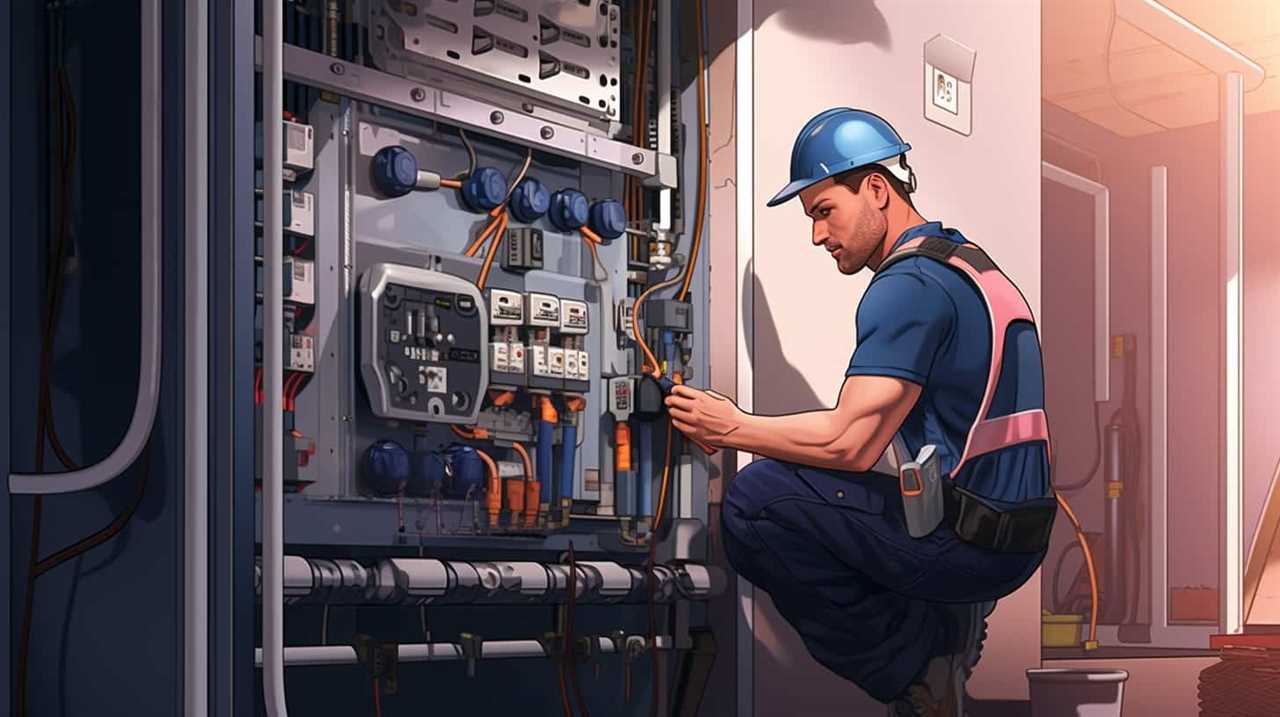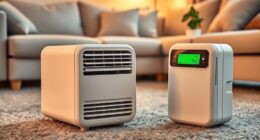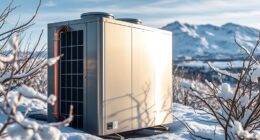We’ve all experienced it – caught in the intense heat with an AC heat pump that just won’t work. But, there’s no need to worry! This article is here to help, offering step-by-step advice on how to diagnose and solve typical problems that can make you feel uncomfortably warm.
From inadequate cooling to unusual noises, we’ve got you covered. So sit back, relax, and let us help you beat the heat by getting your AC heat pump back in tip-top shape.
Key Takeaways
- Common signs of AC heat pump glitches include inadequate cooling or heating, reduced airflow, strange noises, frequent cycling on and off, and water leaks.
- The AC heat pump system consists of components such as the compressor, evaporator coil, condenser coil, expansion valve, and fan.
- Each part in the AC heat pump system has a specific function, such as pressurizing the refrigerant, absorbing heat from the air, releasing heat to the outside air, regulating the flow of refrigerant, and assisting in heat transfer.
- Common troubleshooting issues for AC heat pumps include tripped circuit breakers, dirty air filters, low refrigerant levels, faulty thermostats, and blocked condenser units.
Common Signs of AC Heat Pump Glitches
We’ve identified five common signs of AC heat pump glitches that homeowners should be aware of. These signs can help homeowners troubleshoot issues and understand the common causes behind AC heat pump problems.
-
Inadequate cooling or heating: If your AC heat pump isn’t providing the desired temperature, it could be due to refrigerant leaks, compressor issues, or thermostat malfunctions.

-
Reduced airflow: This sign may be caused by clogged filters, blocked vents, or faulty blower motors.
-
Strange noises: Grinding or squealing noises are indicators of potential problems, often caused by worn-out components or loose parts.
-
Frequent cycling on and off: This can be a result of thermostat issues, low refrigerant levels, or electrical problems.
-
Water leaks: If you notice water leaks around your AC heat pump, it could be due to condensate drain blockages or refrigerant leaks.

Understanding the Components of an AC Heat Pump System
As we delve into the subtopic of understanding the components of an AC heat pump system, it’s crucial to familiarize ourselves with the key system components and the function of each part. By understanding how these components work together, we can better troubleshoot common issues that may arise.
From the compressor and condenser to the expansion valve and evaporator coil, each component plays a vital role in the overall functionality of the AC heat pump system.
Key System Components
Let’s start by understanding the key components of an AC heat pump system. When it comes to keeping your home cool and comfortable, these components play a vital role.
Here are the key system components you need to know:
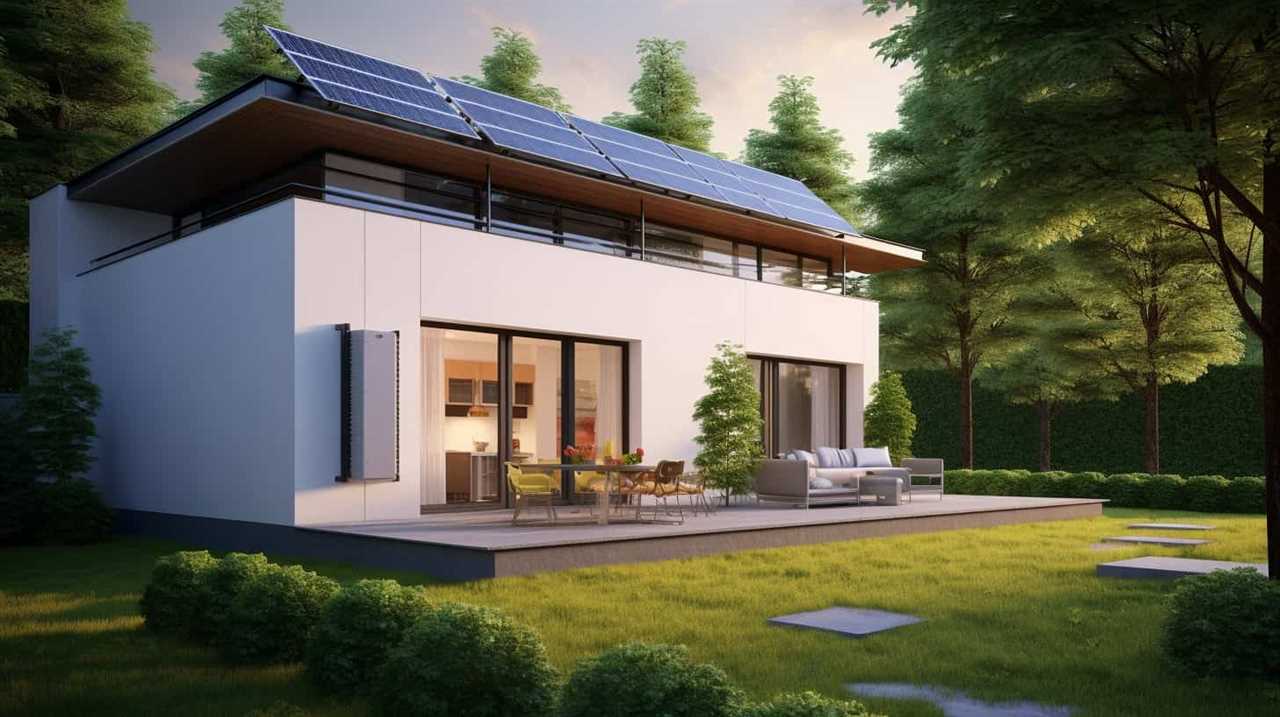
-
Compressor: This is the heart of the system, responsible for pressurizing the refrigerant and propelling it through the system.
-
Evaporator Coil: This component absorbs heat from the air inside your home, cooling it down before it’s circulated back.
-
Condenser Coil: Located in the outdoor unit, this coil releases the heat absorbed from inside, transferring it to the outside air.
-
Expansion Valve: This valve regulates the flow of refrigerant, ensuring the right amount reaches the evaporator coil.
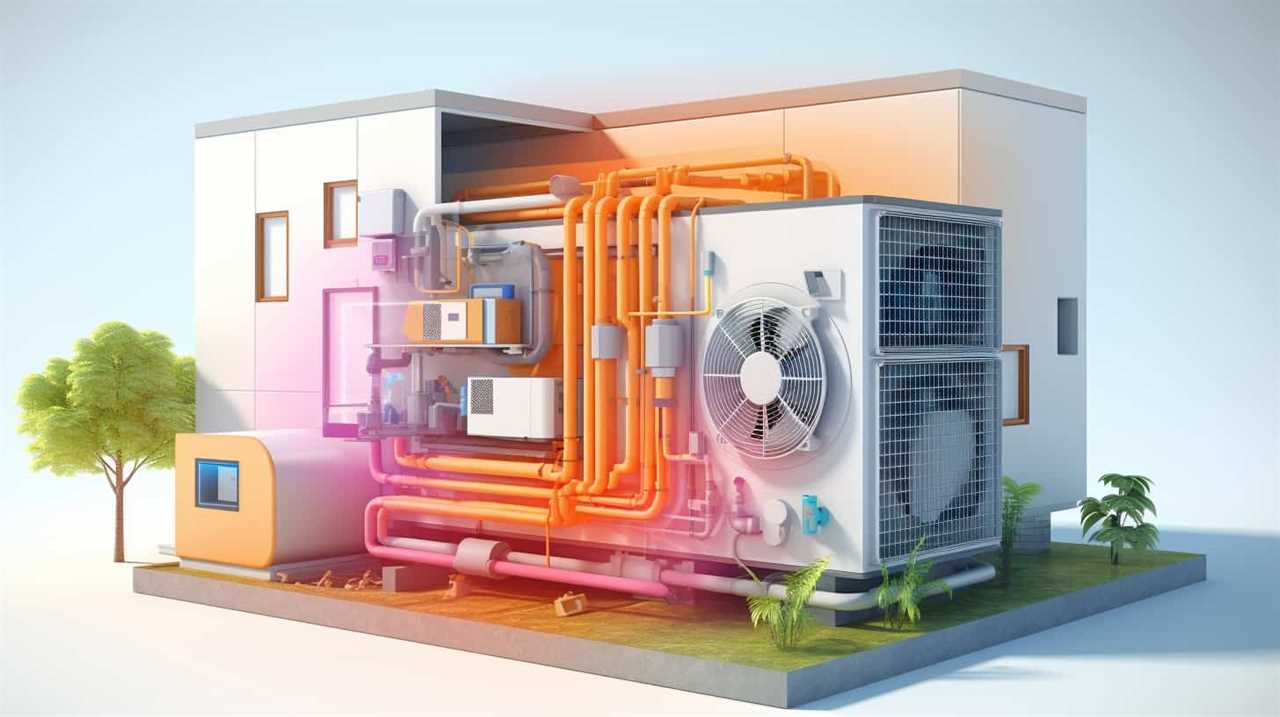
-
Fan: The fan blows air over the evaporator and condenser coils, assisting in heat transfer.
Understanding these key components is essential for identifying common signs of malfunction.
Now, let’s dive into the function of each part.
Function of Each Part
The compressor and the evaporator coil are two crucial components in an AC heat pump system, working together to cool your home. The compressor is responsible for compressing the refrigerant, raising its temperature and pressure. This high-pressure gas then moves to the condenser coil, where it releases heat to the outside air.
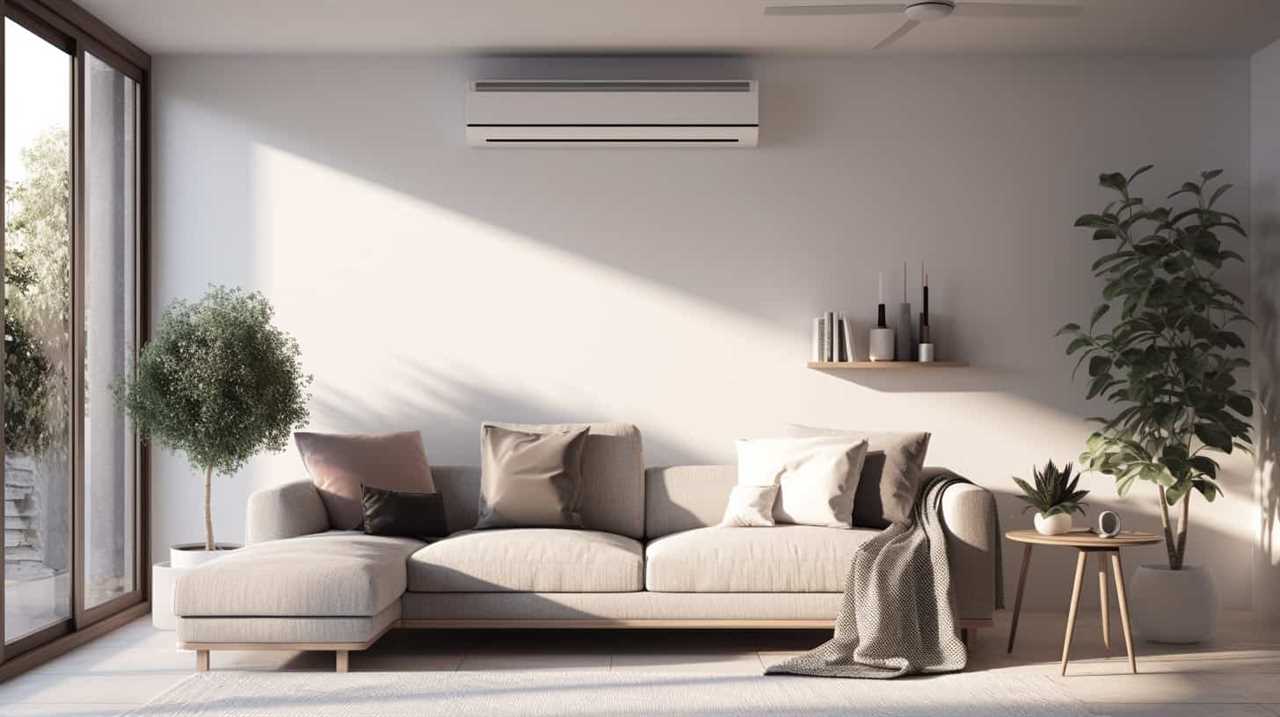
Meanwhile, the evaporator coil absorbs heat from inside your home, cooling the air and reducing humidity. The thermostat, another important component, senses the temperature in your home and signals the system to turn on or off.
Regular maintenance is important to ensure that all these components are functioning properly. It includes cleaning or replacing air filters, checking refrigerant levels, and inspecting electrical connections. By performing regular maintenance, you can ensure that your AC heat pump system operates efficiently and effectively, keeping your home cool and comfortable.
Common Troubleshooting Issues
We have encountered several common troubleshooting issues with our AC heat pump system, but understanding the components has helped us resolve them efficiently.
Here are some common causes and troubleshooting techniques we’ve used:
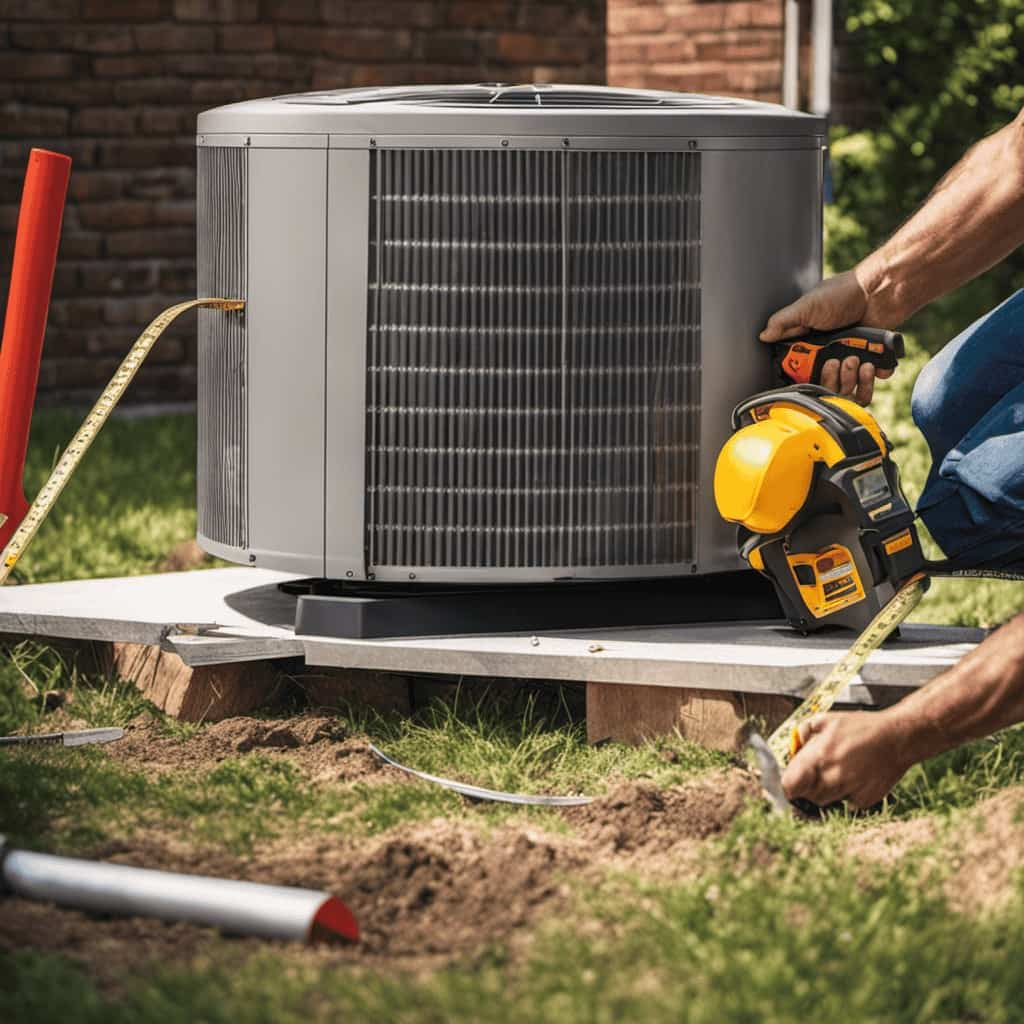
- Tripped circuit breaker: Check the circuit breaker and reset if necessary.
- Dirty air filter: Clean or replace the air filter to improve airflow.
- Low refrigerant levels: Have a professional technician check for leaks and recharge the system if needed.
- Faulty thermostat: Ensure the thermostat is set to the desired temperature and functioning properly.
- Blocked condenser unit: Remove any debris or obstructions from around the condenser unit to ensure proper airflow.
By addressing these common issues, we’ve been able to maintain the efficiency and functionality of our AC heat pump system.
Now, let’s explore how to troubleshoot inadequate cooling from your AC heat pump.
How to Troubleshoot Inadequate Cooling From Your AC Heat Pump
To start troubleshooting inadequate cooling from our AC heat pump, we should first check the air filters for any clogs or blockages. Dirty or clogged air filters can restrict airflow, reducing the cooling capacity of the heat pump.
If the filters are clean, we should then inspect the refrigerant levels. Low refrigerant levels can cause poor cooling performance. Troubleshooting refrigerant leaks involves identifying any visible signs of leakage, such as oil stains or frost on the refrigerant lines. If a leak is detected, it’s important to contact a professional HVAC technician to fix the issue.
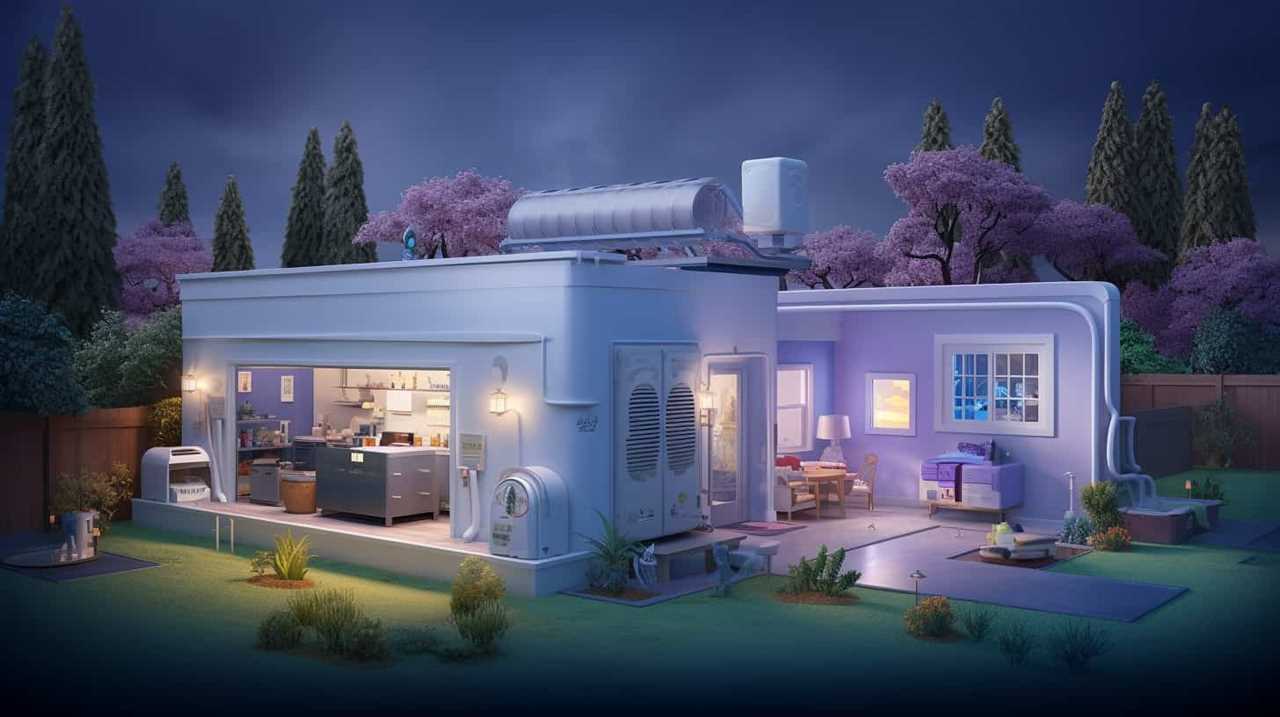
Another potential cause of inadequate cooling is a problem with thermostat calibration. We can check the thermostat settings and ensure it’s accurately calibrated to the desired temperature. If necessary, recalibration may be required to improve cooling efficiency.
Fixing Issues With the AC Heat Pump Not Turning on
To troubleshoot the AC heat pump not turning on, we can first check the power supply and ensure it’s properly connected. Here are some steps to follow when dealing with this issue:
-
Check the thermostat: Make sure the thermostat is set to the desired temperature and is functioning correctly. AC heat pump thermostat issues can often prevent the unit from turning on.
-
Inspect the circuit breaker: Verify that the circuit breaker for the heat pump isn’t tripped. If it is, reset it and see if the unit starts up.
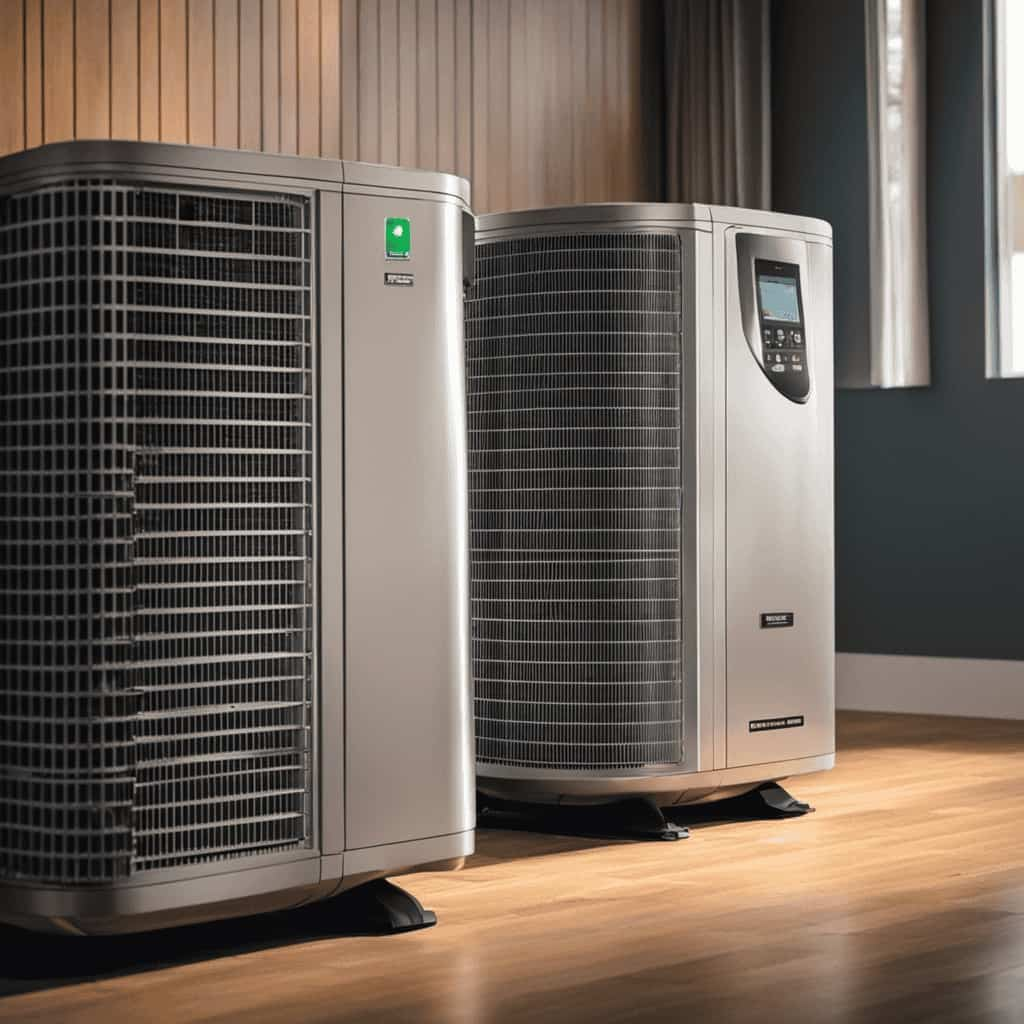
-
Examine the electrical connections: Inspect the electrical connections to ensure they’re tight and secure. Loose or faulty wiring can prevent the AC heat pump from powering on.
-
Clean or replace the air filter: A dirty or clogged air filter can restrict airflow and cause the unit to shut off. Clean or replace the filter regularly to prevent this issue.
-
Call a professional: If you have gone through these troubleshooting steps and the AC heat pump still doesn’t turn on, it may be time to consult a professional. They can diagnose and fix any underlying electrical problems.
Following these troubleshooting steps should help you identify and resolve any issues preventing your AC heat pump from turning on.
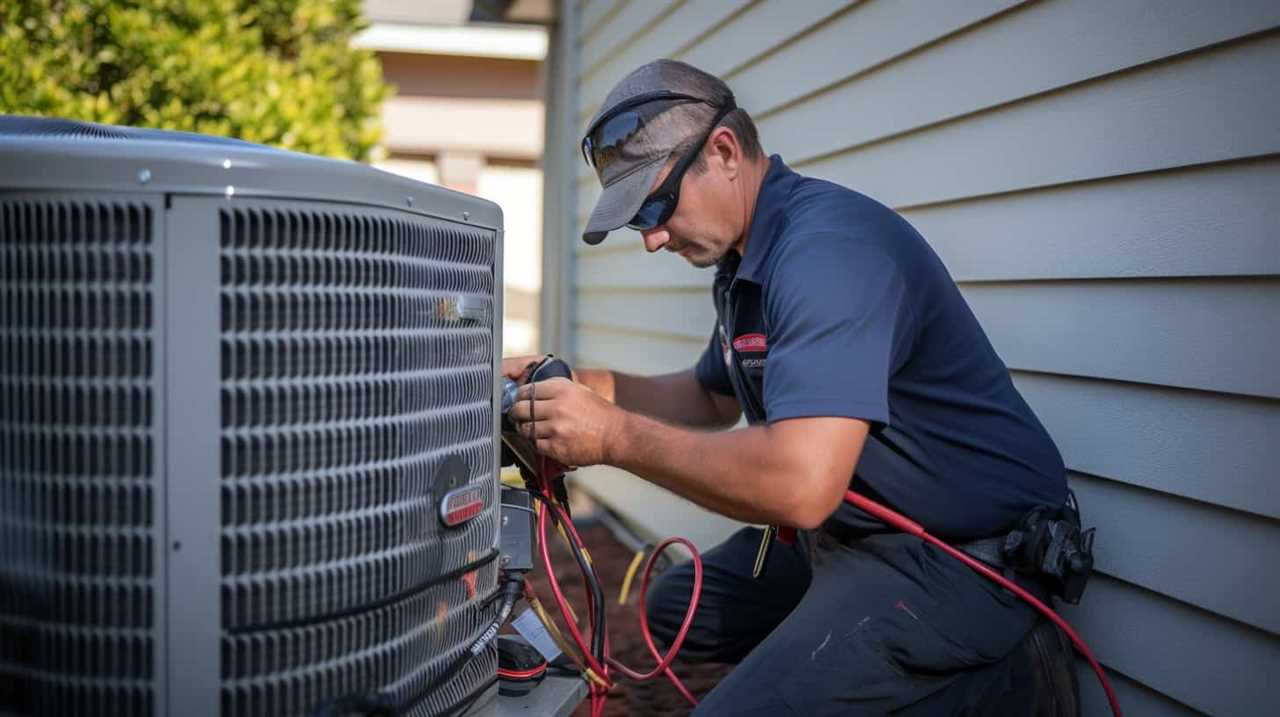
Resolving Problems With the AC Heat Pump Not Heating Properly
One common problem with the AC heat pump is inadequate heating. This can be caused by various factors, including AC heat pump thermostat malfunction and refrigerant leaks. When the thermostat malfunctions, it may not accurately read the temperature in the room, leading to insufficient heating. Troubleshooting the thermostat can involve checking its settings, replacing the batteries, or recalibrating it if necessary. Another potential cause of inadequate heating is refrigerant leaks. Refrigerant is responsible for absorbing and releasing heat in the AC heat pump system. If there are leaks in the refrigerant lines, the heat transfer process is compromised, resulting in reduced heating efficiency. To address this issue, a professional technician should be called to inspect and repair any leaks in the refrigerant lines.
| Possible Causes | Recommended Actions |
|---|---|
| AC heat pump thermostat malfunction | Check thermostat settings, replace batteries, recalibrate if needed |
| Troubleshooting refrigerant leaks | Call a professional technician to inspect and repair any leaks in the refrigerant lines |
Addressing Unusual Noises Coming From the AC Heat Pump
When troubleshooting our AC heat pump, we should pay attention to unusual noises and address them promptly. Diagnosing unusual sounds and troubleshooting heat pump noises is essential to ensure proper functioning and prevent further damage. Here are some common noises you may encounter and their possible causes:
- Rattling or vibrating: Loose components or debris in the system.
- Squealing or screeching: Worn-out fan belt or motor bearings.
- Banging or clanking: Loose or broken parts within the unit.
- Hissing or gurgling: Refrigerant leaks or issues with the refrigerant flow.
- Clicking or buzzing: Electrical problems or faulty relays.
By identifying and addressing these noises, you can prevent potential breakdowns and extend the lifespan of your AC heat pump.
Now, let’s move on to troubleshooting problems with the AC heat pump freezing up.
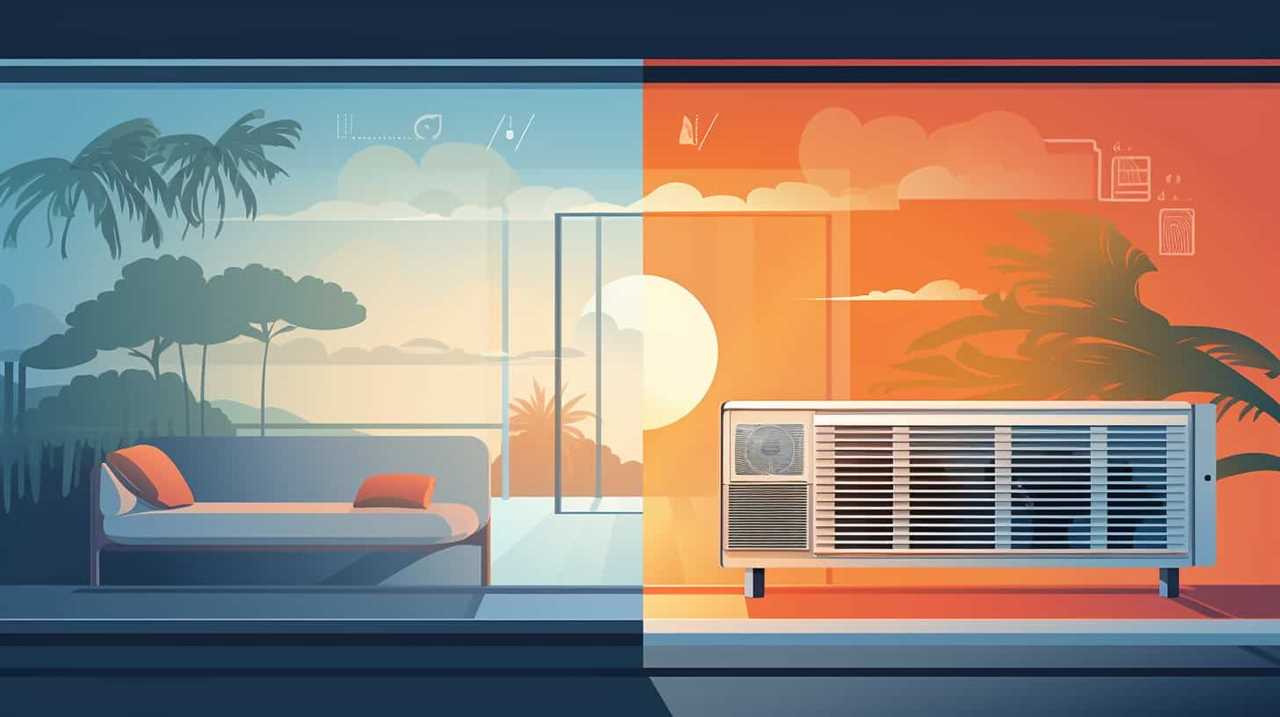
Troubleshooting Problems With the AC Heat Pump Freezing up
Our first step in troubleshooting is to check if our AC heat pump is freezing up, as this can indicate various issues with the system. Freezing up occurs when the evaporator coil becomes covered in ice, preventing the heat pump from effectively cooling or heating the air. One common cause is low refrigerant levels. When the refrigerant is low, the coil gets too cold, causing condensation to freeze. Another issue that can lead to freezing up is a malfunctioning defrost cycle. The defrost cycle is responsible for melting the ice on the coil. If it isn’t functioning properly, the ice will continue to build up. To troubleshoot these problems, we can use the following table as a guide:
| Issue | Possible Cause | Solution |
|---|---|---|
| Freezing up | Low refrigerant levels | Contact a professional to check and refill refrigerant |
| Freezing up | Malfunctioning defrost cycle | Inspect and repair the defrost cycle components |
Fixing Issues With the AC Heat Pump Constantly Cycling on and off
To address the issue of the AC heat pump constantly cycling on and off, we need to troubleshoot potential causes and implement appropriate solutions. Here are some steps to help fix this glitch:
-
Check the thermostat settings: Ensure that the thermostat is set to the desired temperature and that it isn’t causing the constant cycling.
-
Clean or replace the air filter: A dirty or clogged air filter can restrict airflow and cause the heat pump to cycle more frequently.
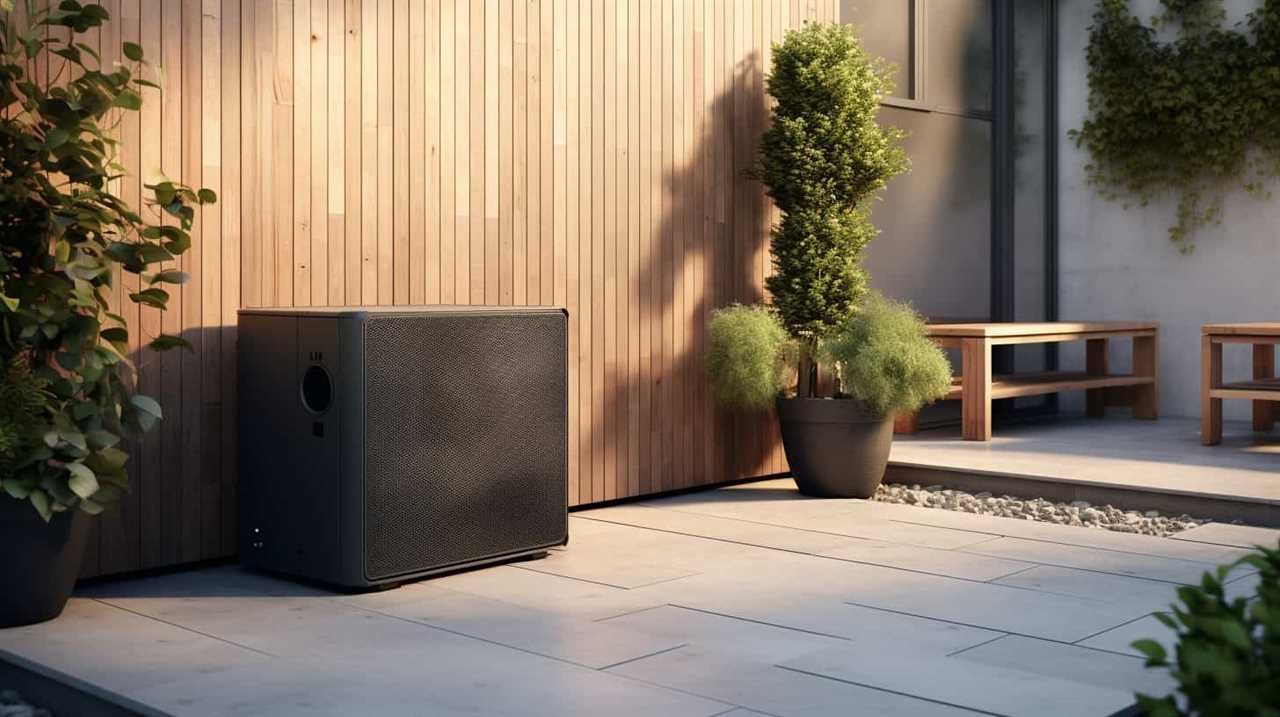
-
Inspect the outdoor unit: Look for any debris, such as leaves or dirt, blocking the unit’s airflow. Clean the unit if necessary.
-
Check the refrigerant levels: Low refrigerant levels can lead to a cycling issue. Consult a professional to inspect and recharge the system if needed.
-
Verify the heat pump size: An improperly sized heat pump may cycle on and off too frequently. Consider consulting an HVAC professional to ensure the correct size for your space.
How to Troubleshoot and Resolve AC Heat Pump Airflow Problems
When troubleshooting and resolving AC heat pump airflow problems, there are a few common issues to consider.
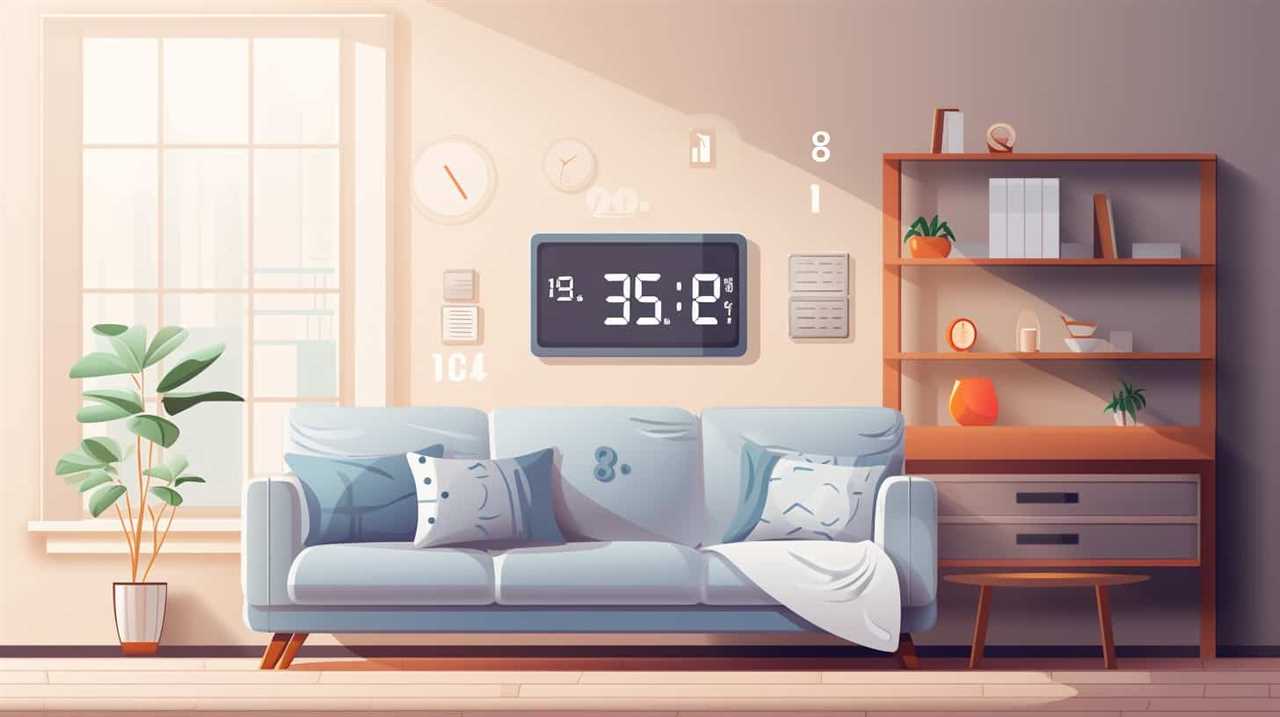
Firstly, insufficient air circulation can result from blocked vents or obstructions in the ductwork.
Secondly, clogged or dirty filters can restrict airflow and reduce efficiency.
Lastly, a malfunctioning fan motor can cause inadequate air movement.
Insufficient Air Circulation
We can troubleshoot and resolve AC heat pump airflow problems by addressing insufficient air circulation. When the airflow is inadequate, it can lead to uncomfortable indoor temperatures and reduced cooling or heating efficiency. Here are some common causes and solutions for insufficient air circulation:

- Clogged air filters: Regularly cleaning or replacing air filters can improve airflow.
- Blocked vents or registers: Make sure furniture or other objects aren’t obstructing the vents or registers.
- Duct leaks: Improper insulation or damaged ductwork can cause air leaks. Sealing or repairing the ducts can enhance airflow.
- Fan motor issues: A malfunctioning fan motor can hinder air circulation. Repair or replace the motor if necessary.
- Thermostat malfunction: A faulty thermostat can disrupt the fan operation. Checking and recalibrating the thermostat may resolve the issue.
Clogged or Dirty Filters
We can address clogged or dirty filters by regularly cleaning or replacing them, and ensure optimal airflow for our AC heat pump system. Dirty filters can restrict airflow, reducing the efficiency of the system and potentially causing it to overheat. Regular maintenance is crucial to prevent these issues and extend the lifespan of the unit. Cleaning the filters involves removing them from the system and gently washing them with soap and water. However, if the filters are damaged or heavily soiled, replacement is necessary. It is important to note that the frequency of cleaning or replacement depends on factors such as the environment and usage. By prioritizing dirty filter maintenance and understanding the importance of filter replacement, we can enjoy the benefits of a well-functioning AC heat pump system for years to come.
| Dirty Filter Maintenance | Filter Replacement Importance |
|---|---|
| Regularly clean filters to remove dirt and debris. | Replace filters when they are damaged or heavily soiled. |
| Ensure optimal airflow and efficiency of the system. | Prevent overheating and extend the lifespan of the unit. |
| Frequency of cleaning or replacement depends on usage and environment. | Maintain a healthy and well-functioning AC heat pump system. |
Fan Motor Malfunction
To troubleshoot and resolve AC heat pump airflow problems caused by fan motor malfunction, we should first check the fan motor for any signs of damage or malfunction. Here are some steps to help troubleshoot and resolve fan motor issues:
- Inspect the fan motor for any visible damage, such as broken blades or loose connections.
- Check the fan motor capacitor for any signs of bulging or leakage.
- Test the voltage going to the fan motor to ensure it’s receiving the proper power supply.
- Lubricate the fan motor bearings if they appear dry or worn.
- If all else fails, consider fan motor replacement as a last resort.
Frequently Asked Questions
Can I Fix AC Heat Pump Glitches on My Own, or Do I Need to Hire a Professional?
We can troubleshoot AC heat pump glitches ourselves, but it’s often best to hire a professional. They have the expertise and tools to accurately diagnose and fix complex issues, ensuring optimal performance and avoiding further damage.
What Are the Common Causes of AC Heat Pump Glitches?
Common causes of AC heat pump glitches include thermostat issues, clogged filters, refrigerant leaks, electrical problems, and faulty components. Troubleshooting AC heat pump glitches requires technical expertise and attention to detail.
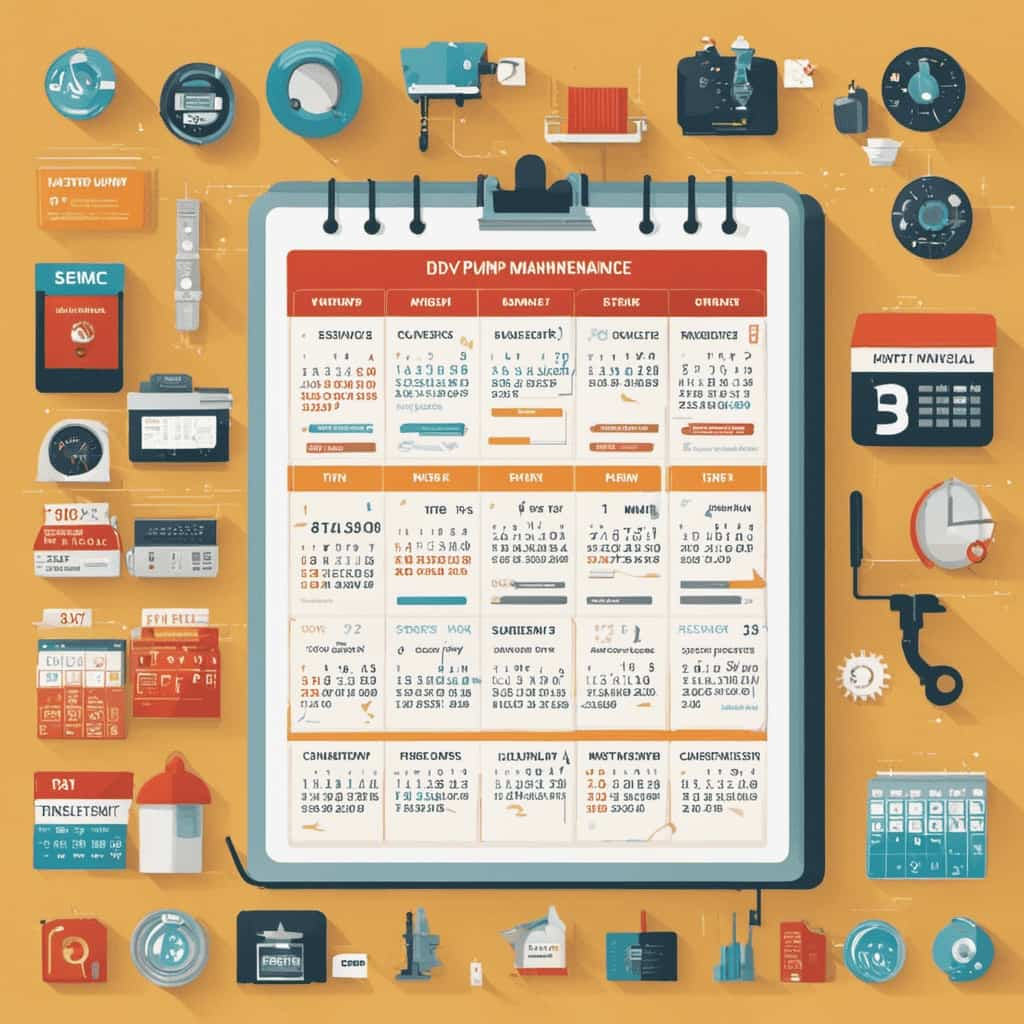
Are There Any Maintenance Tasks I Can Perform to Prevent AC Heat Pump Glitches?
Yes, there are preventive maintenance tasks we can perform to avoid AC heat pump glitches. By regularly cleaning and inspecting the system, and using troubleshooting techniques, we can keep our AC running smoothly.
How Long Does It Typically Take to Fix an AC Heat Pump Glitch?
On average, it takes a professional technician a few hours to fix an AC heat pump glitch. Common troubleshooting techniques include checking for electrical issues, cleaning or replacing filters, and inspecting refrigerant levels.
Are There Any Potential Safety Risks Associated With Fixing AC Heat Pump Glitches?
Potential safety risks associated with fixing AC heat pump glitches include electrical hazards, refrigerant leaks, and improper handling of equipment. It is important to seek professional help to ensure proper diagnosis and repair, minimizing the risk of accidents and further damage.
Conclusion
In conclusion, we’ve explored the common glitches that can occur with an AC heat pump system and provided troubleshooting tips to address these issues.

By understanding the components and taking the necessary steps to fix inadequate cooling, heating problems, unusual noises, freezing up, and constant cycling, you can ensure optimal performance of your AC heat pump.
Additionally, addressing airflow problems will further improve the functionality of your system.
Stay cool and comfortable all year round with a well-maintained AC heat pump.


